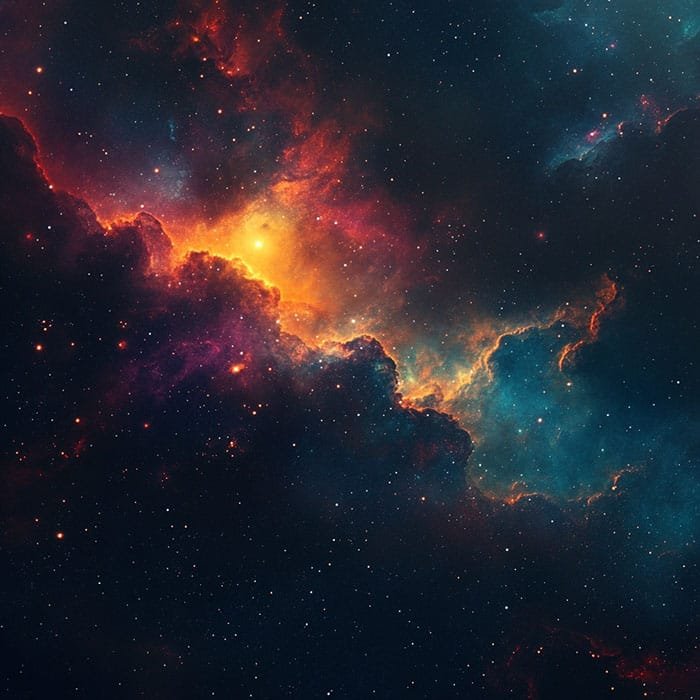How hot was the Big Bang?
The Big Bang began 13.8 billion years ago with temperatures around 10^32 Kelvin, leading to galaxies, stars, and the Cosmic Microwave Background.
Key Takeaways 📝
- The universe’s fiery inception saw temperatures soaring around 103210^{32} Kelvin, a staggering figure that illustrates the extreme conditions at the moment of the Big Bang.
- Within just three minutes post-Big Bang, temperatures dropped to about 10910^9 Kelvin, allowing the formation of the first atomic nuclei through nucleosynthesis.
- The Cosmic Microwave Background (CMB) serves as a relic from the early universe, providing crucial evidence for the Big Bang theory and a glimpse into the universe’s infancy.
- Understanding the Big Bang not only illuminates the origins and evolution of the universe but also enhances our comprehension of fundamental physics and the nature of space and time.
- The story of the Big Bang emphasizes our interconnectedness to the cosmos, inspiring awe by revealing how everything—from atoms to galaxies—originated from a single point.
Introduction: The Cosmic Dawn

Imagine a time when the universe was nothing more than a singular point, a cosmic seed of infinite potential. This is the story of the Big Bang, the colossal explosion that birthed everything we know. But how hot was this fiery beginning? Let’s dive into the heart of the universe’s origin and explore the staggering temperatures that marked the dawn of time.
What is the Big Bang?
The Big Bang theory is the leading explanation for how the universe began. It suggests that the universe was once in an extremely hot and dense state before expanding rapidly. This expansion, which began approximately 13.8 billion years ago, set the stage for the formation of galaxies, stars, and planets.
The Initial Temperature of the Big Bang
The Singularity: A Point of Infinite Heat
At the very beginning, the universe was a singularity—a point of infinite density and temperature. This singularity contained all the energy and matter that would eventually form the universe. The temperature at this point was so high that it defies comprehension, often described as infinite.
The First Second: A Fiery Explosion
Within the first second after the Big Bang, the universe’s temperature was around 10^32 Kelvin. To put this into perspective, the core of our sun is about 15 million Kelvin. The universe was a seething cauldron of energy, where particles collided with unimaginable force.
The Era of Inflation: Rapid Expansion and Cooling

10^-32 Seconds After the Big Bang
During the Era of Inflation, the universe expanded exponentially. This rapid expansion caused the temperature to drop, but it remained incredibly high, between 10^20 and 10^30 Kelvin. This period was crucial for setting the large-scale structure of the universe.
1 Second After the Big Bang
By this time, the universe had cooled to about 10^32 Kelvin. This cooling allowed for the formation of subatomic particles, which would later combine to form atoms.
The Cooling Universe: From Fire to Light

3 Minutes After the Big Bang
Three minutes post-Big Bang, the universe’s temperature had decreased to about 10^9 Kelvin. This cooling allowed protons and neutrons to combine, forming the first atomic nuclei in a process known as nucleosynthesis.
380,000 Years After the Big Bang
As the universe continued to expand and cool, it reached a temperature of about 3000 Kelvin. This cooling allowed electrons to combine with nuclei, forming neutral atoms. This period, known as recombination, made the universe transparent to light, leading to the release of the Cosmic Microwave Background (CMB) radiation.
The Cosmic Microwave Background: A Glimpse into the Past
The CMB is a faint glow of microwave radiation that fills the universe. It is a relic of the Big Bang, providing a snapshot of the universe when it was just 380,000 years old. The CMB is crucial for understanding the early universe and supports the Big Bang theory.
Current Temperature of the Universe
Today, the universe is much cooler, with the CMB measuring just 2.725 Kelvin above absolute zero. This cooling trend is consistent with the Big Bang theory, which predicts that as the universe expands, it cools.
Why Understanding the Big Bang Matters
Understanding the Big Bang is essential for several reasons:
- Origins of the Universe: It provides insights into how the universe began and evolved.
- Formation of Elements: It explains the creation of the first elements, which are the building blocks of stars and planets.
- Cosmic Structure: It helps us understand the large-scale structure of the universe, including galaxies and galaxy clusters.
- Fundamental Physics: It challenges and informs our understanding of fundamental physics, including the nature of space and time.
Personal Insights: The Awe of Cosmic Beginnings

Reflecting on the Big Bang, one can’t help but feel a sense of awe. The idea that everything we see today—from the smallest atom to the largest galaxy—originated from a single point is both humbling and inspiring. It reminds us of the interconnectedness of all things and the incredible journey of the universe from chaos to order.
Conclusion: The Legacy of the Big Bang
The Big Bang was not just an explosion; it was the beginning of everything. From its fiery birth, the universe has expanded and cooled, giving rise to the cosmos we observe today. Understanding the Big Bang helps us appreciate the complexity and beauty of the universe, and our place within it.

FAQs
What was the temperature of the Big Bang?
The temperature of the Big Bang was around 10^32 Kelvin within the first second.
How does the Big Bang theory explain the universe’s expansion?
The Big Bang theory suggests that the universe began as a singularity and has been expanding ever since.
What is the Cosmic Microwave Background?
The CMB is the afterglow of the Big Bang, providing a snapshot of the early universe.
Why is the Big Bang important for understanding the universe?
It explains the origins, evolution, and large-scale structure of the universe.
How has the universe cooled since the Big Bang?
As the universe expanded, it cooled, leading to the formation of atoms, stars, and galaxies.

























